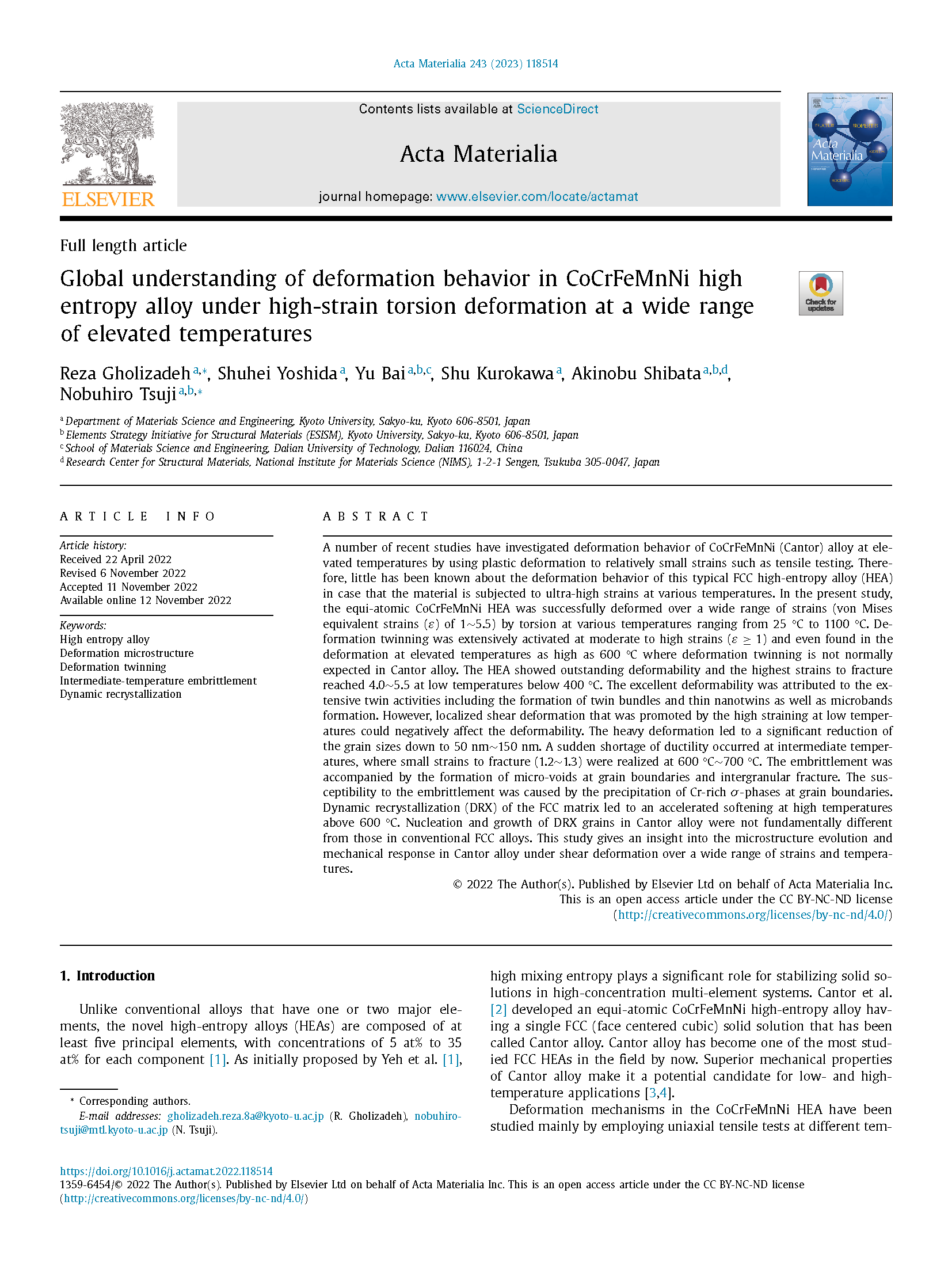Global understanding of deformation behavior in CoCrFeMnNi high entropy alloy under high-strain torsion deformation at a wide range of elevated temperatures
Acta Materialia, 243 (2023), No.118514研究論文概要
A number of recent studies have investigated deformation behavior of CoCrFeMnNi (Cantor) alloy at elevated temperatures by using plastic deformation to relatively small strains such as tensile testing. Therefore, little has been known about the deformation behavior of this typical FCC high-entropy alloy (HEA) in case that the material is subjected to ultra-high strains at various temperatures. In the present study, the equi-atomic CoCrFeMnNi HEA was successfully deformed over a wide range of strains (von Mises equivalent strains (ε) of 1∼5.5) by torsion at various temperatures ranging from 25 °C to 1100 °C. Deformation twinning was extensively activated at moderate to high strains (ε ≥ 1) and even found in the deformation at elevated temperatures as high as 600 °C where deformation twinning is not normally expected in Cantor alloy. The HEA showed outstanding deformability and the highest strains to fracture reached 4.0∼5.5 at low temperatures below 400 °C. The excellent deformability was attributed to the extensive twin activities including the formation of twin bundles and thin nanotwins as well as microbands formation. However, localized shear deformation that was promoted by the high straining at low temperatures could negatively affect the deformability. The heavy deformation led to a significant reduction of the grain sizes down to 50 nm∼150 nm. A sudden shortage of ductility occurred at intermediate temperatures, where small strains to fracture (1.2∼1.3) were realized at 600 °C∼700 °C. The embrittlement was accompanied by the formation of micro-voids at grain boundaries and intergranular fracture. The susceptibility to the embrittlement was caused by the precipitation of Cr-rich σ-phases at grain boundaries. Dynamic recrystallization (DRX) of the FCC matrix led to an accelerated softening at high temperatures above 600 °C. Nucleation and growth of DRX grains in Cantor alloy were not fundamentally different from those in conventional FCC alloys. This study gives an insight into the microstructure evolution and mechanical response in Cantor alloy under shear deformation over a wide range of strains and temperatures.
